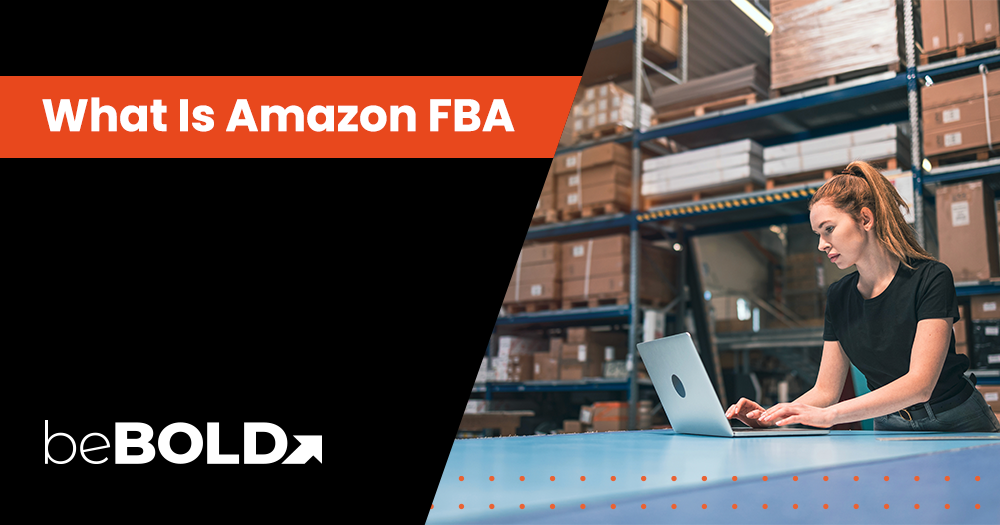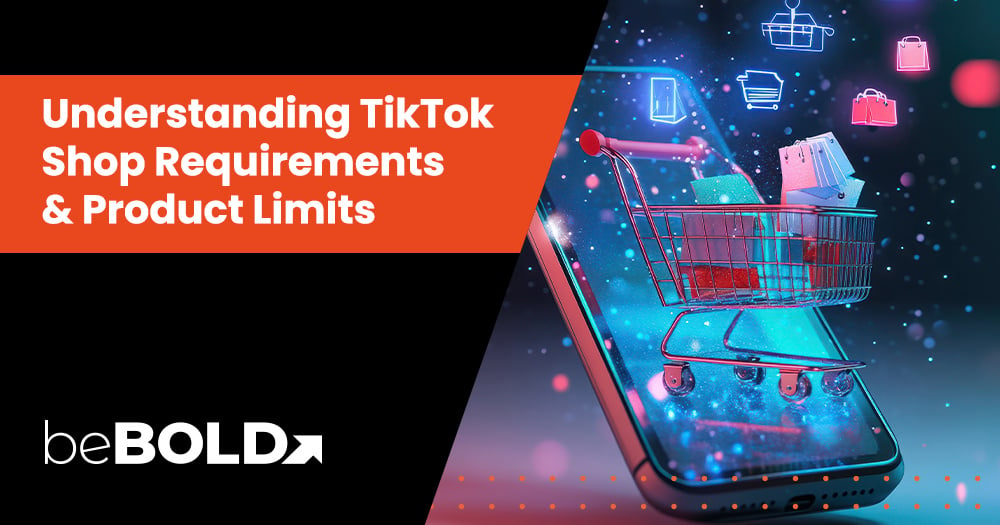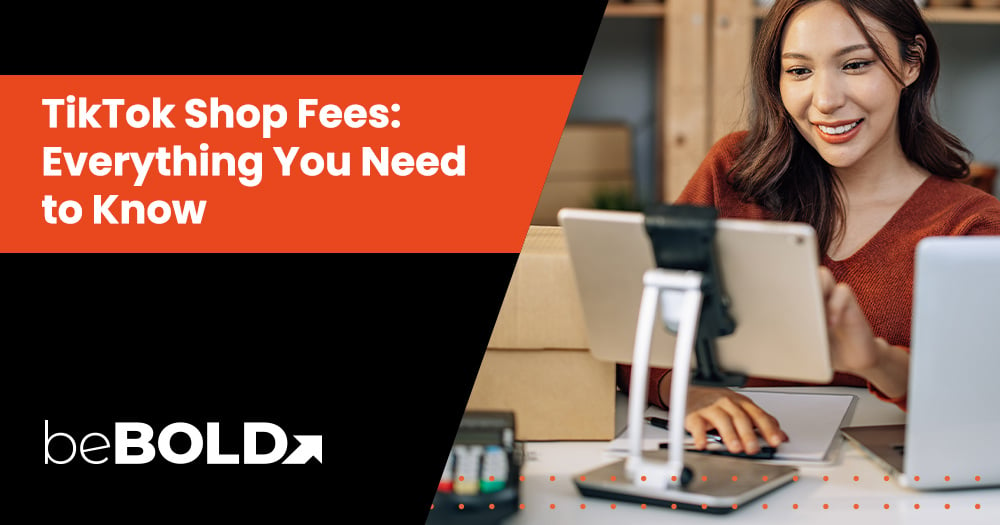Are you aiming to up your game on Amazon? Maybe you’re tired of dealing with shipping and customer service intricacies. You’re not alone. According to the SMB Shipping Pulse Check cited by Chain Store Age, the most common online delivery issues include late deliveries, rounding up to 39%.
Fortunately, Amazon FBA may be the solution you need. More than a service, it's a strategic game-changer that allows you to send your products to Amazon, and then they take care of storage, packing, and shipping when your customers make a purchase. The goal is simple: to create an Amazon brand store without the hassle of doing everything from scratch.
Whether you're a seasoned seller or just starting your business, this Amazon FBA guide will lead you toward success. If you’re eager to know more about how Amazon FBA can help boost your sales, cut costs, and enhance customer satisfaction while keeping your process seamless, continue reading below.

What is Amazon FBA (Fulfillment by Amazon)?

Fulfillment by Amazon (FBA), or Amazon FBA, is a program that enables sellers to delegate fulfillment processes to Amazon. By enrolling in FBA, sellers can store their products in Amazon's strategically located fulfillment centers. When a customer places an order, Amazon efficiently handles the entire fulfillment process, including picking, packing, shipping, and customer service.
FBA not only allows your business listings to display the Prime badge for eligible offers but also offers additional advantages, such as fast, free two-day shipping, flexible enrollment options, and specialized tools like Remote Fulfillment and Amazon Global Logistics for optimizing operations, expanding their reach to international markets and meeting diverse business goals.
How Amazon FBA Works? A Complete Breakdown
Amazon's FBA program simplifies the logistics and fulfillment process for online sellers by allowing Amazon sellers to delegate all shipping responsibilities, including returns and refunds, along with product storage in Amazon's warehouses. This service also includes picking, packing, and additional services.
The platform handles the remaining operational tasks seamlessly, leading to more efficient Amazon marketplace management. With this service, you can rely on the company to manage inventory and fulfill orders—given you maintain sales and ensure a steady supply of your products.
How to Start Selling on Amazon FBA: 7 Crucial Steps to Follow

Ready to embark on your Amazon FBA journey? This comprehensive guide will walk you through the essential steps to set up and successfully run your online business on Amazon's powerful platform. From product sourcing to inventory management, learn how to navigate the intricacies of FBA and maximize your sales potential.
Step 1: Determine your fulfillment approach
Decide if you want to use FBA for all your products or just some, then expand its reach by using FBA to fulfill orders from other sales channels, like your website. You can explore the Multi-Channel Fulfillment option to connect your channels easily through pre-built apps or direct API integration for automated order processing.
Step 2: List your products to FBA
After deciding which products to send to Amazon fulfillment centers, enroll them in FBA through your Seller Central Account using one of two methods:
- When adding new inventory, choose “Amazon will ship and provide customer service (FBA)” in the “Offer” tab.
- If you've already added products and wish to switch to FBA, go to "Inventory" in the Seller Central main menu, select "Manage Inventory," and click the “Edit” drop-down menu next to the product you want to fulfill through Amazon. Then, opt for “Change to Fulfilled by Amazon.”
Ensure you've accurately entered product dimensions to prevent potential inventory issues in the future.
Step 3: Prep and pack your products
For a seamless check-in at Amazon fulfillment centers, adhere to FBA packaging, prep, and labeling guidelines. Keep these essentials on hand as needed:
- Ship-from address
- Product measurements
- Case sizes
- Shipping boxes
- Poly bags and bubble wrap
- Shipping scale
- Printer for labels
- Avery 5160 or 8160 paper for printing Amazon barcodes
Step 4: Send your products to an Amazon fulfillment center
When shipping your inventory, use the "Send to Amazon" workflow in Amazon Seller Central to guide you through the process. You can save on costs and streamline your shipping by using Amazon Partnered Carriers for discounted rates, billed directly to your Amazon seller account.
Amazon offers printable shipping labels and automatically uploads shipment tracking information.
How long does it take for products to check in at fulfillment centers?
Under standard business conditions, inventory takes about 2-4 weeks to check-in. However, this can extend to 4-6 weeks during peak periods. Always ensure your shipments are correctly prepped and labeled to avoid issues or delays.
Step 5: Market your products
Marketing is considered an integral part of the overall strategy to maximize your products' exposure and sales potential on the Amazon marketplace.
To maximize Amazon’s features, utilize in-platform marketing tools, such as Sponsored Products and Product Display Ads, to actively promote and increase the visibility of your products. Leveraging these advertising features will help you reach a wider audience.
Step 6: Track inventory and manage stock levels
Even though FBA notifies you of orders it handles, always monitor your inventory levels when planning your shipping strategy.
You can manage and review inventory easily from the FBA dashboard, accessible in Seller Central. Open the main menu, hover over "Inventory," and select "Dashboard" under Fulfillment by Amazon. From there, you can create and monitor existing shipments and plan and restock your inventory.
The FBA Restock Inventory tool plans shipment amounts and timeframes, providing custom recommendations based on sales history, demand forecast, seasonality, and replenishment settings.
What are the different fulfillment statuses of Buy with Prime Orders, and what do they mean?
The different fulfillment statuses of Buy with Prime orders on Amazon are:
- Unfulfilled: The product has not been fulfilled yet.
- Preparing to Ship: Amazon is in the process of fulfilling the product.
- Unable to Fulfill: Amazon is unable to fulfill the item due to insufficient inventory. In this case, Amazon will automatically issue a refund to the customer.
- Shipped: The product has been fulfilled and dispatched to the customer.
Step 7: Explore Sale Opportunities
Adding the Prime badge to your FBA listings can help you boost sales by making offers attractive to shoppers. Here are some benefits being an Amazon Prime seller gives you:
- One-day or two-day delivery: Joining Amazon Prime provides unlimited access to 1-day and 2-day order delivery. This is important because around 62% of shoppers expect their orders with free shipping to arrive in less than three business days.
- More visibility: As the number of Prime customers on Amazon grows, Prime membership increases your product visibility, making them more accessible to your customers and enhancing the chances of increased sales.
- Early access: You can enjoy early access during sales events, providing a head start of a day or a few hours to approach customers before other sellers.
Prime Day: Amazon's Prime Day is an event exclusively for Prime members. It features personalized deals and top brands.
The Pros and Cons of Amazon FBA: What Sellers Need to Know

Deciding whether to leverage Amazon FBA for your online business is a significant decision. To make an informed choice and optimize your Amazon selling experience, it's crucial to understand both the advantages and potential drawbacks of this popular fulfillment service. By weighing the pros and cons, you can determine if FBA aligns with your business goals and maximizes your success on Amazon.
Benefits of Amazon FBA
- Increased sales: By leveraging Amazon's vast customer base and Prime membership benefits, FBA sellers can significantly boost their sales. The Prime badge associated with FBA listings attracts more buyers and increases conversion rates.
- Reduced costs: FBA can help reduce operational costs by eliminating the need for warehousing, packing, and shipping. Amazon's efficient fulfillment network and economies of scale can significantly lower your logistics expenses.
- 24/7 customer service: Amazon's customer service team handles inquiries, returns, and refunds on behalf of FBA sellers, ensuring a seamless customer experience and freeing up sellers to focus on other aspects of their business.
- More visibility: Visibility isn’t just about prospects seeing your product; it’s also about how the platform itself sees you. Products enrolled in FBA gain visibility among Prime customers who actively seek the convenience of fast and free shipping, as well as Amazon itself. The more relevant your product is, the more Amazon shows it to its user base.
- Easy listing process: The simplified listing process on FBA facilitates quicker product listings, reducing the time and effort required to bring products to market.
Drawbacks of Amazon FBA
- Lack of control: Sellers relinquish control over certain aspects of the fulfillment process, such as packaging and shipping, as Amazon handles these operations. This can become disadvantageous for you as it may lead to higher packaging costs and potential variations in customer experience. Moreover, limited influence on shipping routes and carriers could impact your reputation and your customer’s satisfaction.
- Increased returns: While Amazon's efficient returns process can be convenient for customers, it can also lead to a higher rate of returns for sellers. This can impact your profitability, especially if you sell products that are prone to returns.
- Amazon's policies: Amazon's policies and terms of service are constantly evolving, and non-compliance can result in penalties or account suspension. Staying updated on the latest policies is crucial to avoid negative consequences.
- Higher fees: Despite the benefits, FBA involves additional fees for inventory, long-term storage, removal orders, and refunds that may impact profit margins. It's essential to compare this with fulfillment by merchant (FBM), which doesn't incur additional fees. Before applying, it is essential to calculate your costs carefully to ensure profitability.
What Are the Key Costs and Fees to Consider with Amazon FBA?

Amazon FBA comes with a set of costs and fees that need to be considered strategically. These Amazon FBA fees typically include fulfillment fees, inventory storage fees, aged inventory surcharges, unplanned service fees, and removal fees. By understanding these costs, sellers can effectively manage their expenses and optimize their profitability on the Amazon platform. Stay tuned to have an in-depth understanding of these fees.
1. Fulfillment fees
Fulfillment fees in Amazon FBA are charges associated with the entire process of picking, packing, and shipping your products to customers. This includes handling, storage, and shipping costs. Amazon charges these fees based on the size and weight of your products.
It's important to note that fulfillment fees can vary depending on factors like product dimensions, weight, and shipping speed.
2. Inventory storage fees
Inventory storage fees in Amazon FBA are charges levied by Amazon for storing your products in their fulfillment centers. These fees are calculated based on the volume of your inventory and the duration it's stored.
Amazon charges storage fees on a monthly basis, with rates varying based on the time of year (standard and peak seasons) and the size of your products. Additionally, there are long-term storage fees for items that remain in Amazon's warehouses for extended periods
3. Aged inventory surcharges
Aged inventory surcharges are additional fees imposed by Amazon on sellers who have inventory stored in their fulfillment centers for an extended period (typically 181 days or more). These surcharges are designed to incentivize sellers to manage their inventory levels effectively and avoid excessive storage costs.
By charging these fees, Amazon aims to optimize warehouse space and reduce the costs associated with storing slow-moving or obsolete inventory.
4. Unplanned service fees
Unplanned service fees in Amazon FBA are charges incurred when your shipments don't meet Amazon's specific packaging, labeling, or prep requirements. These fees are essentially penalties for non-compliance and can significantly impact your overall FBA costs.
To avoid these fees, it's crucial to carefully follow Amazon's guidelines for preparing and labeling your products. This includes using the correct FNSKU labels, ensuring proper packaging, and adhering to specific dimensions and weight limits.
5. Removal fees
Removal fees are charged by Amazon when you request to remove your inventory from their fulfillment centers. These fees cover the cost of processing and handling your products, regardless of whether you choose to have them returned to you or disposed of by Amazon.
The specific removal fee for each item depends on its size, weight, and the fulfillment center location. It's important to note that removal fees can vary, especially during peak seasons when Amazon's warehouses are under increased pressure.
How to Sell More with Amazon FBA: 5 Key Strategies to Achieve Faster Sales Growth

There are several strategies that can help you achieve faster sales growth. From competitive pricing and optimized product listings to strategic inventory management and Amazon advertising, we have discussed the five most effective techniques in the next section to help you stand out in Amazon’s competitive e-commerce landscape.
1. Offer Competitive Prices
Pricing plays a crucial role in customer purchasing decisions. By offering competitive prices, you make your products more appealing to cost-conscious consumers, potentially increasing sales.
Competitive prices enhance visibility, increase sales, and contribute to positive customer experiences. Balancing competitiveness with healthy profit margins is crucial for long-term success
2. Optimize Your Product Listings
In such a competitive marketplace like Amazon, it's essential to stay relevant to your audience by improving the visibility of your products through listing optimization. This involves using relevant keywords, clear and compelling product descriptions, and high-quality images to attract and inform potential buyers.
3. Keep High-Demand Products Well-Stocked
The trick to continuous business is finding the sweet spot in supply and demand. Tracking and inventory management will help you see just how much demand there is so you can prepare for it. This is especially true for high-demand products.
Ensure that popular products are consistently available to meet customer demand. Running out of stock may result in missed sales opportunities and could lead customers to choose alternative sellers.
4. Invest in Amazon Advertising
Boost your product visibility through Amazon's advertising platform. Sponsored ads and other advertising options can increase the visibility of your products, making them more likely to be noticed and purchased by customers.
5. Encourage Customer Reviews
Actively encourage customers to leave reviews for your products. Positive reviews not only build trust among potential buyers but also contribute to better rankings on Amazon. Reviews serve as social proof, influencing others to choose your products, thus aiding in increasing sales.
Amazon FBA or Seller-Fulfilled Prime: Which Is Right for You?
Choosing between Fulfillment by Amazon (FBA) and Seller-Fulfilled Prime (SFP) can be a critical decision for Amazon sellers. Both programs offer the coveted Prime badge, but they differ significantly in terms of logistics and costs. While FBA handles storage, packing, and shipping, SFP requires sellers to manage these processes themselves.
Here's a quick comparison to help you decide:
|
Feature |
Fulfillment by Amazon (FBA) |
Seller-Fulfilled Prime (SFP) |
|
Logistics |
Amazon handles storage, packing, and shipping |
Seller handles storage, packing, and shipping |
|
Prime Badge |
Yes |
Yes |
|
Customer Service |
Amazon handles customer service |
Seller handles customer service |
|
Costs |
Higher fees for storage, fulfillment, and referral |
Lower fees but higher shipping costs |
|
Control |
Less control over the fulfillment process |
More control over the fulfillment process |
Ultimately, the best choice depends on your business model, product volume, and specific needs. If you prioritize convenience and faster shipping times, FBA might be the better option.
However, SFP could be a suitable choice if you want more control over your operations and are willing to manage logistics.
Boost Your Amazon Sales and Succeed with beBOLD Digital’s Proven FBA Strategies
While FBA simplifies many aspects of online selling, from storage and shipping to customer service, success on Amazon requires more than just enrollment. To truly thrive, you need a strategic approach. That's where beBOLD Digital comes in. We understand the challenges sellers face and offer tailored, results-driven solutions to help your business thrive. From optimizing your listings to crafting data-backed strategies that boost visibility and sales, we'll guide you through every step of the process.
Ready to transform your Amazon business? Take the BOLD step and contact us today!
Final Thoughts
Amazon FBA offers numerous benefits, such as streamlined fulfillment, increased visibility, and access to Prime benefits. However, it also comes with potential drawbacks, including higher fees and reduced control over the customer experience.
The key to success on Amazon FBA lies in a well-crafted strategy. By carefully considering factors like product selection, pricing, inventory management, and marketing, sellers can optimize their operations and maximize their returns.
Remember, the Amazon marketplace is highly competitive, and staying ahead requires continuous adaptation and a willingness to experiment. By leveraging the power of FBA and implementing effective strategies, you can position your business for long-term growth and success.
Frequently Asked Questions (FAQs) About Amazon FBA
How much does it cost to start selling on Amazon FBA?
The cost of starting an Amazon FBA business can vary depending on several factors, including the type of products you sell, your initial inventory investment, and the fees charged by Amazon. These fees include referral fees, fulfillment fees, and storage fees. Additionally, you might incur costs for product sourcing, packaging, and shipping to Amazon's fulfillment centers.
What is the difference between FBA and FBM (Fulfillment by Merchant)?
FBA and FBM are Amazon's two primary fulfillment methods. With FBA, Amazon handles storage, packaging, shipping, and customer service for your products. This can significantly reduce your operational burden but comes with additional fees.
In contrast, with FBM, you, as the seller, are responsible for storing, packing, and shipping your products to customers. This method offers more control over the fulfillment process but requires more effort and resources.
How can I increase my product ranking on Amazon?
To increase your product ranking on Amazon, focus on optimizing your product listings with relevant, high-ranking keywords in the title, bullet points, and description. Invest in high-quality images and compelling content to boost click-through and conversion rates. Encourage positive reviews by delivering exceptional customer experiences and following up with customers. Leverage Amazon's advertising tools, such as Sponsored Products, to drive traffic to your listings. Ensure competitive pricing, maintain consistent inventory levels, and offer fast shipping to improve your seller metrics. Additionally, take advantage of Amazon FBA for better visibility and trust. Combining these strategies will enhance your ranking and visibility over time.
Are there any restrictions on the types of products I can sell through Amazon FBA?
Yes, Amazon has specific guidelines and restrictions on the types of products that can be sold through FBA. Some product categories require additional certifications or approvals. It's crucial to review Amazon's Seller Central guidelines and prohibited products list to ensure compliance.
How do I handle returns on Amazon FBA?
Amazon handles most returns on behalf of FBA sellers. When a customer initiates a return, Amazon will provide a prepaid shipping label to the customer. Once the returned item is received, Amazon will either refund the customer or send the item back to you. As an FBA seller, you'll be responsible for any restocking fees or disposal costs associated with returned items.








Comments